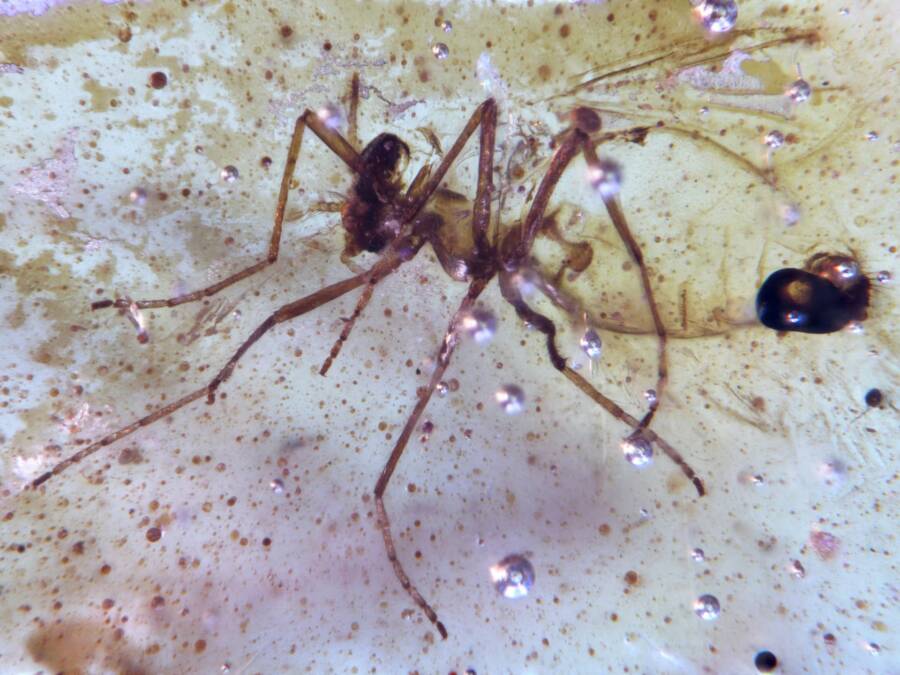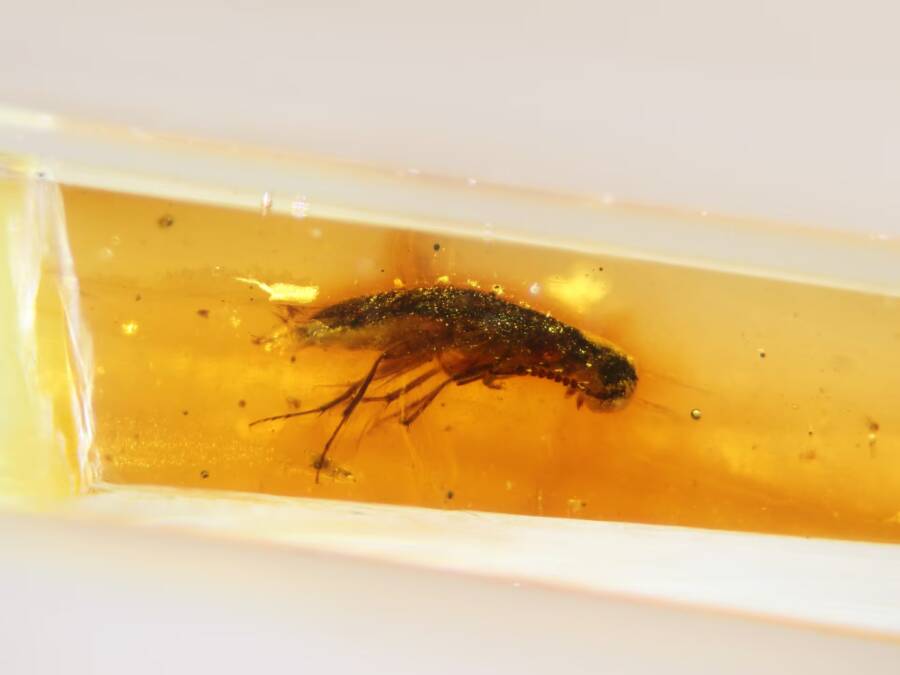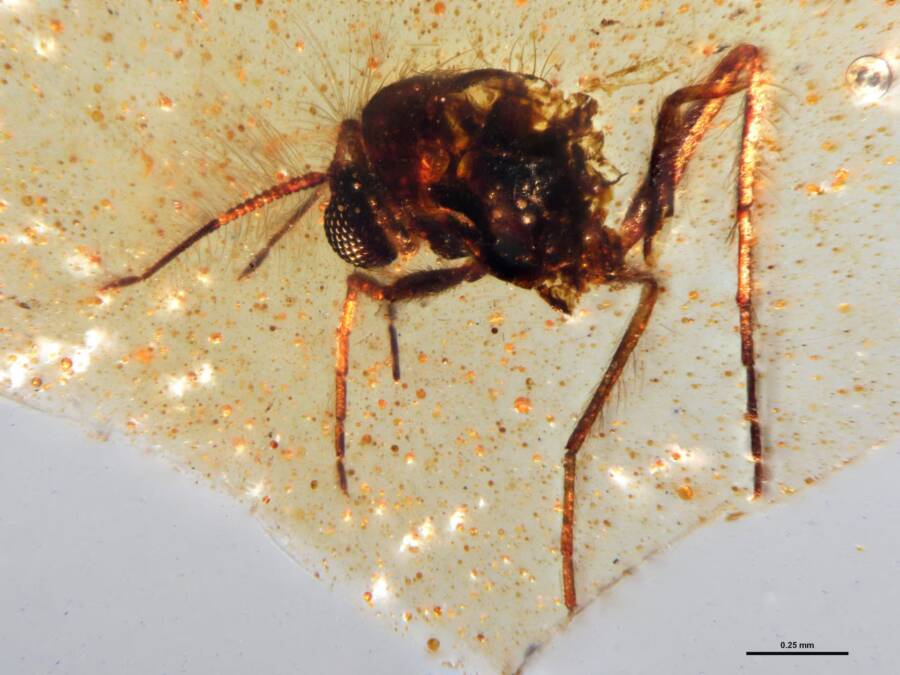Ancient Amazon Amber Reveals Stunning, Millennia-Old Spiderwebs and Insects Frozen in Time
Imagine stumbling upon a 112 million-year-old fly trapped in amber, perfectly preserved like it was stuck in an eternal traffic jam from the age of dinosaurs. Now, toss in a prehistoric spiderweb—yes, an actual spider Netflix binge session frozen mid-weave—plus 21 other ancient insects, all caught in a resin time capsule deep in the Ecuadorian Amazon. This isn’t just a collector’s item for entomologists; it’s the first Mesozoic-era insect-bearing amber ever found in South America, unveiling secrets of a once lush, humid forest ecosystem that thrived near the equator long before coffee was a thing. Ever wonder what a forest buzzing with prehistoric flies, wasps, and beetles looked like? Well, this discovery in Ecuador’s Napo region lifts the curtain on a world where araucariacean conifers stood tall and spider silk spun stories of survival. So, what’s it like to hold a piece of Earth’s Jurassic gossip in your hand? Let’s dive into this sticky saga of ancient life.
Researchers excavating at a quarry in the Ecuadorian Amazon have unearthed a prehistoric spiderweb preserved in amber along with 21 insects frozen in time from the age of the dinosaurs.

Monica Solorzano-KraemerA 112 million-year-old fly specimen preserved in amber that was unearthed in Ecuador.
Scientists have discovered the first insect-bearing amber from the Mesozoic era ever found in South America, offering new insights into this region’s humid forest ecosystem that thrived near the equator 112 million years ago.
This remarkable discovery from Ecuador’s Napo region also represents the largest Mesozoic amber deposit yet found in South America. As described in new research published in Communications Earth & Environment, the find contains exceptionally-preserved arthropods, including flies, beetles, wasps, and fragments of a prehistoric spiderweb.
The Discovery Of Prehistoric Insects And A Spiderweb Preserved In Amber For 112 Million Years
The amber deposits were found at the Genoveva quarry in the Hollín Formation, where researchers collected 60 amber samples from petroleum-saturated sandstone. The petroleum has both protected and chemically altered the amber over millions of years.
In all, 21 arthropod specimens frozen in amber (known as bioinclusions) from the Cretaceous Period were recovered, representing at least six insect orders. Flies dominate the collection, with 11 specimens including biting midges, chironomids, and long-legged flies. The presence of chironomids and caddisflies — both having aquatic larval stages — indicates that the area’s prehistoric forests had ample bodies of water or generally moist conditions.
The amber also preserved parasitic wasps from two families and a beetle belonging to the Tetratomidae family, one rarely found in the fossil record. One particularly significant discovery was a fragment of spiderweb showing seven silk strands arranged in what appears to be an orbicular pattern, though without the sticky droplets typically found on such webs.

Monica Solorzano-KraemerA preserved polypore fungus beetle that was found in amber.
Chemical analyses using Fourier transform infrared spectroscopy (FTIR) revealed that the amber was produced by araucariacean trees, prehistoric conifers related to modern monkey puzzle trees. The resin formed in two ways: around tree roots and as aerial droplets from trunks and branches. Only the aerial amber contained biological inclusions.
Plant fossils found alongside the amber paint a picture of a diverse forest dominated by araucariacean conifers with an understory of ferns and fern allies. The site also preserved the earliest-known angiosperm leaf assemblage from northwestern South America.
In all, researchers wrote, “This discovery provides direct evidence of a humid, resinous forest ecosystem and its arthropod fauna in equatorial Gondwana during the Cretaceous Resinous Interval.”
Rare Insight Into How The Ecosystem In Prehistoric Gondwana Changed Over Time
The forest ecosystem found here contrasts sharply with contemporaneous sites in eastern South America, where arid conditions were prevalent. Global climate models suggest a precipitation gradient existed across the continent during the mid-Cretaceous, with wetter conditions in the west and drier conditions in the east.
Notably absent from the Ecuadorian deposits is any evidence of wildfire, a common feature in Cretaceous amber sites in the Northern Hemisphere. This supports the idea that the Ecuadorian site had humid conditions that were unfavorable to fire.

Monica Solorzano-KraemerA non-biting midge trapped in amber and preserved for 112 million years.
The amber formed during the Cretaceous Resinous Interval, a period between 125 and 72 million years ago that was characterized by extensive resin production by conifers. While such deposits are common in the Northern Hemisphere (several deposits with insects have been found in Myanmar alone just in the last few years, including a millipede, a “Venus flytrap” wasp, and a “hell ant”), they are rare in what was once Gondwana — the Southern Hemisphere’s prehistoric supercontinent.


















Post Comment